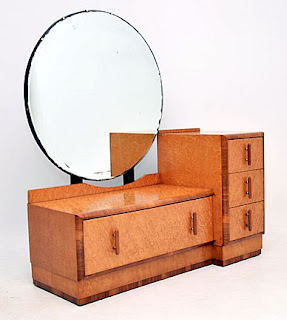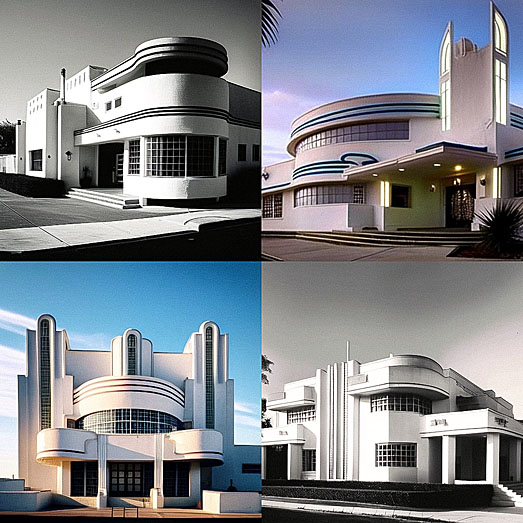 QUESTION: While antiquing on a recent weekend, I came across a shop with a display case full of antique brooches. And while I’ve seen old brooches before, I never saw this many together. That got me to wonder how the brooch came to be. What can you tell me about the origin and history of the brooch?
QUESTION: While antiquing on a recent weekend, I came across a shop with a display case full of antique brooches. And while I’ve seen old brooches before, I never saw this many together. That got me to wonder how the brooch came to be. What can you tell me about the origin and history of the brooch?
ANSWER: Brooches have a long history dating back to the Bronze Age, originally serving as fasteners for clothing before evolving into decorative jewelry. Over the centuries, they have been made from various materials and have reflected changing fashions and social status. Brooches became especially popular during Victorian times.
Brooches have usually been made of silver or gold, decorated with enamel or with gemstones and may have been solely ornamental or serve as a clothes fastener. As fashions in brooches changed quickly, they became historical indicators.
 Before the Middle Ages, brooches were called fibula. With a lack of buttons, they were necessary as clothes fasteners, but also acted as markers of social status for both men and women. During the Iron Age in Europe, metalworking technology advanced dramatically, including casting, metal bar-twisting and wire making. As early as 400 BCE, Celtic craftsmen in Europe created fibulae decorated in red enamel and coral inlay.
Before the Middle Ages, brooches were called fibula. With a lack of buttons, they were necessary as clothes fasteners, but also acted as markers of social status for both men and women. During the Iron Age in Europe, metalworking technology advanced dramatically, including casting, metal bar-twisting and wire making. As early as 400 BCE, Celtic craftsmen in Europe created fibulae decorated in red enamel and coral inlay.
 Brooches first appeared in Britain in 600 BCE, lasting until 150 BCE. The most common brooch forms during this time were the bow, the plate, and the penannular brooch. Most of these were cast in one piece, with most from copper alloy or iron. The brooches of this era show Roman jewelry techniques, including repoussé, filigree, granulation, enameling, openwork and inlay. Color was the primary feature of brooches of this period. The precious stone most often used was the almandine, a burgundy variety of garnet, found in Europe and India. Designers would cover the entire surface of an object with the tiny geometric shapes of precious stones or enamel which artisans then polished flat until they were flush with the cloisonné settings, giving the appearance of a tiny stained glass window.
Brooches first appeared in Britain in 600 BCE, lasting until 150 BCE. The most common brooch forms during this time were the bow, the plate, and the penannular brooch. Most of these were cast in one piece, with most from copper alloy or iron. The brooches of this era show Roman jewelry techniques, including repoussé, filigree, granulation, enameling, openwork and inlay. Color was the primary feature of brooches of this period. The precious stone most often used was the almandine, a burgundy variety of garnet, found in Europe and India. Designers would cover the entire surface of an object with the tiny geometric shapes of precious stones or enamel which artisans then polished flat until they were flush with the cloisonné settings, giving the appearance of a tiny stained glass window.
 Artisans used many variations in their brooch designs---geometric decoration, intricate patterns, abstract designs from nature, bird motifs and running scrolls. Intertwined beasts were often a signature feature of these intricately decorated brooches. Bow shaped, S-shaped, radiate-headed and decorated disc brooches were the most common styles from the 5th through the 7th centuries.
Artisans used many variations in their brooch designs---geometric decoration, intricate patterns, abstract designs from nature, bird motifs and running scrolls. Intertwined beasts were often a signature feature of these intricately decorated brooches. Bow shaped, S-shaped, radiate-headed and decorated disc brooches were the most common styles from the 5th through the 7th centuries.
Circular brooches first appeared in England in the middle of the 5th century. And by the end of the 6th century, the circular form had become the preferred brooch shape.
 Celtic brooches represent a tradition of elaborately decorated penannular and pseudo-penannular types developed in early medieval Ireland and Scotland. However, certain characteristics of Celtic jewelry, such as inlaid millefiori glass and curvilinear styles, have more in common with ancient brooches than contemporary Anglo-Saxon jewelry.
Celtic brooches represent a tradition of elaborately decorated penannular and pseudo-penannular types developed in early medieval Ireland and Scotland. However, certain characteristics of Celtic jewelry, such as inlaid millefiori glass and curvilinear styles, have more in common with ancient brooches than contemporary Anglo-Saxon jewelry.
Scandinavian brooches, generally made of silver and copper alloy, embraced the Germanic animal style of decoration in the Middle Ages. This decorative style originated in Denmark in the late 5th century as a response to late Roman metalwork.
 Viking craftsmen decorated their brooches in one or more of the Viking styles---Oseberg, Borre, Jellinge, Mammen, Ringerike and Urnes. Viking brooches came in seven different forms---circular, bird-shaped, oval, equal-armed, trefoil, lozenge-shaped, and domed disc. Designs featured a variety of decoration, including interlaced gripping beasts, single animal motifs, ribbon-shaped animals, knot and ring-chain patterns, tendrils, and leaf, beast and bird motifs.
Viking craftsmen decorated their brooches in one or more of the Viking styles---Oseberg, Borre, Jellinge, Mammen, Ringerike and Urnes. Viking brooches came in seven different forms---circular, bird-shaped, oval, equal-armed, trefoil, lozenge-shaped, and domed disc. Designs featured a variety of decoration, including interlaced gripping beasts, single animal motifs, ribbon-shaped animals, knot and ring-chain patterns, tendrils, and leaf, beast and bird motifs.
 Both men and women wore brooches during the late medieval period from 1300 to 1500. Brooches were star-shaped, pentagonal, lobed, wheel, heart-shaped, and ring. Smaller than other brooches, ring brooches often fastened clothing at the neck. Brooch decoration usually consisted of a simple inscription or gems applied to a gold or silver base. Inscriptions of love, friendship and faith were a typical of ring brooches of this time. Heart-shaped brooches were a popular gift between lovers or friends.
Both men and women wore brooches during the late medieval period from 1300 to 1500. Brooches were star-shaped, pentagonal, lobed, wheel, heart-shaped, and ring. Smaller than other brooches, ring brooches often fastened clothing at the neck. Brooch decoration usually consisted of a simple inscription or gems applied to a gold or silver base. Inscriptions of love, friendship and faith were a typical of ring brooches of this time. Heart-shaped brooches were a popular gift between lovers or friends.
 The Renaissance, lasting from 1300 to 1600, was a time of wealth and opulence in the Mediterranean region. Elaborate brooches covered in emeralds, diamonds, rubies, amethyst and topaz or pearls were in fashion, especially with the upper classes. Brooches with religious motifs and enameled miniature portraits were also popular.
The Renaissance, lasting from 1300 to 1600, was a time of wealth and opulence in the Mediterranean region. Elaborate brooches covered in emeralds, diamonds, rubies, amethyst and topaz or pearls were in fashion, especially with the upper classes. Brooches with religious motifs and enameled miniature portraits were also popular.
 By the beginning of the 18th century ornate brooches made of gold and silver with complex designs were fashionable. By the mid- to late 1700s, simpler forms and designs were more common, with simpler themes of nature, bows, miniature portraits and animals.
By the beginning of the 18th century ornate brooches made of gold and silver with complex designs were fashionable. By the mid- to late 1700s, simpler forms and designs were more common, with simpler themes of nature, bows, miniature portraits and animals.
Brooches made during the Neoclassical Period, between 1760 and 1830, featured classical themes of ancient Greece and Rome. The main difference between Renaissance brooches and Neoclassical jones were that artisans created Renaissance brooches primarily for the upper class and Neoclassical ones for the general public.
 English pottery manufacturer Josiah Wedgwood produced cameo brooches in black basalt and jasper. Cameos and brooches with classical scenes were fashionable during this period.
English pottery manufacturer Josiah Wedgwood produced cameo brooches in black basalt and jasper. Cameos and brooches with classical scenes were fashionable during this period.
Cameos, locket brooches, flowers, nature, animal and hearts were popular in the early Victorian era. When Victoria's husband, Prince Albert, died in 1861, brooch design changed to reflect the queen in mourning. Styles turned heavier and more somber, using materials like black enamel, jet, and black onyx.
 It was fashionable during this period to incorporate hair and portraiture into a brooch. The practice began as an expression of mourning, then expanded to keepsakes of loved ones who were living. Artisans encased human hair encased within a brooch or braided and wove it into a band to which they attached clasps.
It was fashionable during this period to incorporate hair and portraiture into a brooch. The practice began as an expression of mourning, then expanded to keepsakes of loved ones who were living. Artisans encased human hair encased within a brooch or braided and wove it into a band to which they attached clasps.
By the early 20th century, brooches appeared with diamonds, typically with platinum or white gold, and colored gemstones or pearls. Popular brooch forms included bows, ribbons, swags, and garlands, all in the delicate new style.
 The Art Deco style found a place in modern brooch design. Common decoration included geometric shapes, abstract designs, designs from Cubism, Fauvism, and art motifs from Egypt and India. Artisans used black onyx, coral, quartz, lapis and carnelian along with diamonds, rubies, emeralds, and sapphires.
The Art Deco style found a place in modern brooch design. Common decoration included geometric shapes, abstract designs, designs from Cubism, Fauvism, and art motifs from Egypt and India. Artisans used black onyx, coral, quartz, lapis and carnelian along with diamonds, rubies, emeralds, and sapphires.
To read more articles on antiques, please visit the Antiques Articles section of my Web site. And to stay up to the minute on antiques and collectibles, please join the over 30,000 readers by following my free online magazine, #TheAntiquesAlmanac. Learn more about "Return to Toyland" in the 2024 Holiday Edition, online now. And to read daily posts about unique objects from the past and their histories, like the #Antiques and More Collection on Facebook.






































